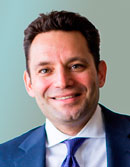
As we languish in summer heat, we feel anguish in summer Tweets.
If there has ever been a larger global megaphone than President Trump’s Twitter account, we don’t know what it is. While we try our best to ignore most of it in order to prevent overreactions when it comes to investing, the prospect of a major shift in U.S. global trade policy could have major investment implications.
In this report we will look at the risks but focus on why we believe the heightened trade tensions are temporary and not a long term structural change to the markets. We believe that NAFTA will get resolved with some notable wins for the United States, and most other ‘trade wars’ will settle down without significant changes.
We also review how TriDelta did and what we see going forward.
Changes to the global trade order may start with President Trump, but the facts on trade will determine how it all ends.
Our views on what will happen to global trade are based on two key items. The first is the facts on trade; who the U.S. trades with, the respective trade balance with each of these countries and how reliant they are on one another for trade. Secondly, we look at how reliant each country is on the United States.
The second focus helps to truly understand President Trump’s end goals and negotiation strategies. So let’s review.
The United States has five major trading partners. The EU, China, Canada, Mexico, and Japan. These five partners represent 69% of all US foreign trade, and 86% of the U.S. trade deficit.
From the list below you can see the high level details.
US Trade in 2017 – Top 5 Trading Partners (according to the International Trade Administration) in USD millions.
| Rank | Country/District | Exports | Imports | Total Trade | Trade Balance |
|---|---|---|---|---|---|
| – | World | 1,546,273 | 2,341,963 | 3,888,236 | -795,690 |
| 1 | European Union | 283,269 | 434,633 | 717,902 | -151,363 |
| 2 | China | 129,894 | 505,470 | 635,364 | -375,576 |
| 3 | Canada | 282,265 | 299,319 | 581,584 | -17,054 |
| 4 | Mexico | 243,314 | 314,267 | 557,581 | -70,953 |
| 5 | Japan | 67,605 | 136,481 | 204,086 | -68,876 |
When it comes to Donald Trump’s approach, he wrote about his 11 winning negotiation tactics in his 1987 book The Art of the Deal.
His first one was:
Think big
“I like thinking big. I always have. To me it’s very simple: if you’re going to be thinking anyway, you might as well think big.”
He has said consistently that he believes that the U.S. has been taken advantage of on trade and that he will put a stop to that. If he is going to do that he will focus on his biggest trading partners and he will start by asking for everything.
Another key item on Trump’s list is pretty common for most negotiations. He wants to find points of leverage and during negotiations to act as cool as possible – showing no interest or worry about resolving matters.
Use your leverage
“The worst thing you can possibly do in a deal is seem desperate to make it. That makes the other guy smell blood, and then you’re dead.”
If the U.S. wants leverage from its trading partners, the two easiest countries on the top 5 list would be Mexico and Canada. For Mexico, 81.0% of its exports go to the U.S.. For Canada, the number is 76.4%. Mexico and Canada need the U.S. in a big way.
On the flip side, the percentage of U.S. exports going to Canada is 18% and it is 16% for Mexico.
Percentage of a countries exports that go to the United States:
| Mexico | 81.0% |
| Canada | 76.4% |
| Japan | 20.2% |
| China | 18.2% |
| India | 16.0% |
Another of Trump’s tactics is:
Get the word out
“One thing I’ve learned about the press is that they’re always hungry for a good story, and the more sensational the better…The point is that if you are a little different, a little outrageous, or if you do things that are bold or controversial, the press is going to write about you.”
Clearly, Trump can use the media to get his side of the story out in a loud and large way. For us it remains important not to put too much stock in individual comments that Trump makes when it comes to trade issues. He will say anything to keep the focus on him and his issues.
Fight back
“In most cases I’m very easy to get along with. I’m very good to people who are good to me. But when people treat me badly or unfairly or try to take advantage of me, my general attitude, all my life, has been to fight back very hard.”
This can certainly explain his reaction to Trudeau and others. It is par for the course with Trump, and while the personal attacks are unseemly, they are not likely to lead anywhere as long as there is real negotiation leverage to fall back on.
This now brings us to China. For China, the U.S. is its largest trading partner, and represents 18% of exports and 9% of imports, but as you can see from these numbers, the Chinese economy is fairly diverse and not overly reliant on the U.S. In fact, 80% of China’s GDP is from domestic consumption. Purely based on the numbers, the United States doesn’t have nearly as much leverage with China as it has with Canada and Mexico. To top it off, China is the largest foreign holder of U.S. debt at over $1.5 trillion. Needless to say, the United States needs to be careful in its negotiations with China.
Basically, we see NAFTA as something that will end up being resolved, likely with some clear wins for the United States. The threats, loud complaints, and the personal attacks do not worry us. They are all on the Trump negotiating tactic list. If we had to guess, one potential loser from a NAFTA agreement will be the Dairy Industry in Canada as it has been the centerpiece of many Trump attacks and one that he will most want to raise as a sign of victory. Keep in mind that many Canadians themselves criticize the structure, high costs and unfairness of the Canadian dairy industry.
At the end of the day, Canada and Mexico are negotiating from a point of weakness and ultimately may give more than they want in order to get a deal done. But it should be noted that despite no tax cuts in Canada and with the uncertainty of trade, Canadian GDP growth is expected to be quite strong in the second half of the year.
When it comes to China and trade imbalances, the United States simply does not have the leverage to win this trade war. Where Canada and Mexico need the U.S. more than the other way around, that simply isn’t the case with China. If only 20% of China’s GDP are exports, and the U.S. is 18% of its exports, that means the U.S. market represents only 3.6% of China’s GDP. Because he holds the loudest megaphone, Trump can still claim victories along the way, but when it comes to China, the U.S. is fighting a battle that they won’t win. The one exception is in technology and intellectual property as is evidenced by the action against Chinese giant Tencent. China is reliant on US technology, particularly semiconductors, to fuel its growth and this is an area where concessions can be earned.
We think their discussions with the EU may be a little more productive, but will most likely end up closer to status quo than see any major wins for either side.
This leads to one of Trumps final negotiation tactics:
Maximize the options
“I never get too attached to one deal or one approach. I keep a lot of balls in the air, because most deals fall out, no matter how promising they seem at first.”
This tells us that while Trump may go after every big region to try and negotiate a better deal, he recognizes that he won’t win them all. From an investment risk perspective, it means that we should be less worried about Trump fighting five different trade wars at once. Once he has a big win he can ‘Trump-et’, the others may fade.
TriDelta’s View of the Risk of Global Trade Wars
In summary, we believe that NAFTA will get resolved and Trump will claim a big trade victory, but it should only negatively impact a few select sectors. He can use this as proof that he is a good negotiator and that he is winning points for America. This may take pressure off of him on other global trade deals that the U.S. can’t win to any great extent.
While trade tensions may cause turmoil, we do not believe it will bring on impending market doom.
The TriDelta Growth Fund has had a strong run. It was up 3.0% in Q2 and up 5.6% over the first six months of 2018.
The TriDelta Pension Fund which focuses on dividend growing stocks and is a lower volatility fund, has seen slower growth after a couple of very good years. It was up 2.2% in Q2 and up 2.8% over the first six months.
The TriDelta Fixed Income Fund was up 0.4% in Q2 and 1.1% in the first six months.
The TriDelta High Income Balanced Fund was up 3.2% in Q2 and 3.3% in the first six months of the year.
Overall most clients are up between 1.5% and 4% year to date depending on their asset mix.
By comparison, the TSX was up 1.9% in the first half of the year, the Canadian Bond Universe was up 0.6% year to date to June 30th, while the S&P 500 in Canadian dollars was up 7.7%. Global equities outside of the U.S. have been mostly negative this year.
We continue to be pleased with how our portfolios have been able to smooth out much of the market volatility that we have seen over the past 6 months. Most clients experienced losses of less than 1% in February when the S&P500 experienced a short term loss of 13%. At TriDelta, the more we can avoid those declines in the first place, it makes it easier to stick to and achieve the long term plans. By reducing volatility, stress is reduced, and more rational investment decisions can be made.
Central Banks
Bank of Canada governor Stephen Poloz, with his extensive background in trade-related issues and global trade contacts from his prior post at the Export Development Corporation, is perhaps best suited of all the embroiled nations’ bankers to assess what the escalating trade war with United States means. The announced tariffs on metals and other goods between the two nations implies that consumer prices are set to rise in the coming months. As the anticipated “loser” in any trade battle with the US, the very real prospect of a weaker Canadian dollar could also be the source of further inflationary pressure as buying foreign goods becomes relatively more expensive. Typically, a central bank will raise interest rates to keep inflation at a comfortable level. In the past, however, the Bank of Canada has recognized that certain types of inflation are not responsive to adjustments in its overnight rate and is likely to regard tariff- and currency-related price increases as a one-time “supply shock”. Furthermore, as a relatively small and open economy that derives 25 percent of its economic activity from exports to the U.S., Poloz must also contemplate a downgrade to near-term growth estimates and be less likely to raise rates at the margin as a result.
The conundrum faced by the U.S. Federal Reserve is somewhat more complicated. With unemployment at a 20 year low, the economy expanding at a nearly four percent annualized rate in the current quarter, more fiscal tailwinds on the way and some inflation measures already at the high end of its comfort zone, the Fed has signaled its intention to continue to gradually raise interest rates.
Although the Congress is divided on the evolving tariff policy, it has shown a proclivity to tax cuts and spending and could opt for more of the same to cushion any economic drag – particularly as they are a few months away from what promises to be a hotly-contested mid-term federal election.
Bond Market Response
Understandably, risk appetite in fixed income markets diminished as the second quarter drew to a close. Nevertheless, corporate bonds in North America managed to approximately return their running yield (meaning little change on bond prices). Government bonds themselves, after a mid-quarter test of the three percent yield level on US government ten-year bonds, retraced their path to settle down slightly for the quarter. We anticipate some more volatility while the trade representatives work begrudgingly towards compromises that are politically palatable in their respective countries. Risks to that view include a meaningful increase in inflation expectations amongst US consumers, which might prompt the Federal Reserve to raise rates more aggressively. There is also the potential for China state-owned entities to sell US treasury bonds in large quantities as a means of retaliating against tariff action and defending its own currency, which has come under pressure in recent weeks.
Stock Markets
In the stock markets, given our belief that heightened trade tensions are temporary and not a long term structural change to the markets, we believe that there will likely be some relief rallies as trade news improves.
Despite this view, we stand ready to react if things do continue to escalate. We would increase cash and sell calls into higher volatility in order to generate income. This speaks to good investment management in general. You develop a core thesis and manage to that expectation, however, you always acknowledge that things change and you need to be ready to quickly change your investment approach as the facts come in.
As far as individual names or sectors are concerned, TriDelta has a disciplined process that starts with equity screens that focus on selecting companies with attributes that outperform over time. The increase in tariffs can artificially impact earnings (positive or negative). As a result, when we look at key factors such as earnings estimate changes, growth in earnings and earnings based valuation metrics, more scrutiny is needed when evaluating a company to determine if recent increases or decreases in these key variables are affected by the addition or removal of tariffs.
These are the key items and thinking that is keeping us busy on the investment management front.
The biggest megaphone doesn’t mean the most important news. Today, global trade wars and threats are the loudest stories, yet by studying the situation a little deeper, we believe that we can be a step ahead of these issues as they develop.
We hope that you have a great rest of the summer, and we thank you for your continued trust.
TriDelta Investment Management Committee

VP, Equities |

President and CEO |
|

Exec VP and Portfolio Manager |

VP, Portfolio Manager and |
|
